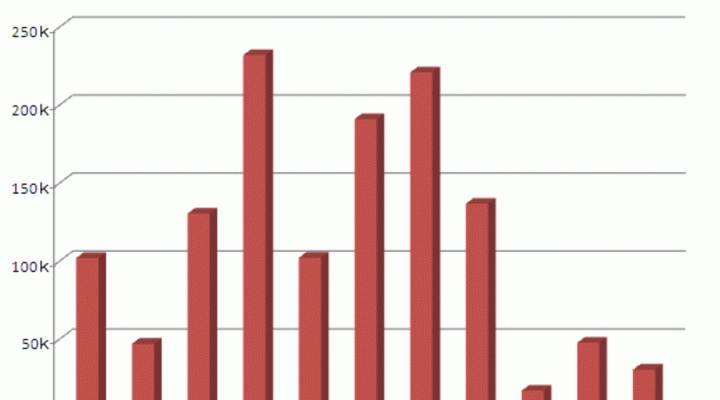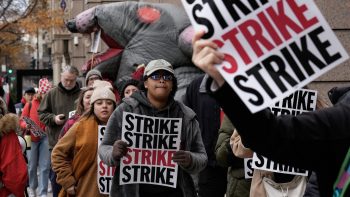
Work stoppages and strikes are on the rise. Data from the Bureau of Labor Statistics show that we’re tracking to have more workers on strike this year than last, and their numbers don’t include the 45,000 Verizon workers that ended their strike last week.
That sorry state of affairs means we’re marking down the Marketplace Daily Index again.
Why are we looking at strikes on Labor Day? Because Labor Day became a federal holiday in the wake of a particularly violent industrial action in 1894 called the Pullman Strike. The holiday was actually created in New York in 1882, but President Grover Cleveland decided to make it a federal holiday as part of a deal with the labor movement to end the Pullman Strike.
Those BLS stats don’t look good for the economy, and they don’t paint the whole picture, either. They only include data provided by unions with memberships of over 1,000, so the actual number of work stoppages could be much higher. But could it be good news for the economy if workers are striking more? The data suggests that workers strike in good times, and stay off the picket lines when the economy’s doing poorly. You can see from the chart that work stoppages peaked at the height of the boom, and dropped off sharply in 2009 as the financial crisis bit and dragged us into recession.
Both labor and employers recognize that a down economy is not good for labor negotiations, as the millions of Americans who lost their jobs during the recession are anxious for any kind of work. Employers can fill up their workforces with “scab” labor.
“There’s no need to — to pay workers more,” Andrew Sum, an economist at Northeastern University told PBS Newshour. “Workers do not have the collective bargaining power to demand that they get paid more. And, so, as a result, the upper hand at the current time is held by corporations.”
But that logic only holds when looking at the data since 1990, after which the recessions have been comparatively mild. Track back into the 1980s and back to the end of the Second World War, and strike activity was much more frequent and involved more workers. Unions were stronger, of course, but a glance at BLS statistics showed that work stoppages during recessions were commonplace, and in some cases, there was more strike activity during a recession that during the periods of growth that preceded or followed the recession.
One possible comparison is the 1973-1975 recession, which saw unemployment rise to 9 percent, and GDP decline 3.2 percent (the recent recession saw unemployment rise to 10.1 percent and GDP decline 5.1 percent.). In the 73-75 recession, work stoppages peaked at the very depth of the downturn, at nearly double the rate in the years before and after the recession.
Why would that be? Maybe because in a really deep recession, workers feel that the only way they can be heard is to do the desperate thing and strike. In a situation where assets are worth so much less, where the stock market is rocky and the future is so uncertain, they may feel they have little to lose by going on strike. Economists say that we’re no longer in a technical recession, but a great many Americans don’t feel that way. It could be that their sense of desperation is driving them onto the picket lines, to improve their situations by using brinkmanship, when everything else, from government to the markets, has failed.
There’s a lot happening in the world. Through it all, Marketplace is here for you.
You rely on Marketplace to break down the world’s events and tell you how it affects you in a fact-based, approachable way. We rely on your financial support to keep making that possible.
Your donation today powers the independent journalism that you rely on. For just $5/month, you can help sustain Marketplace so we can keep reporting on the things that matter to you.


















